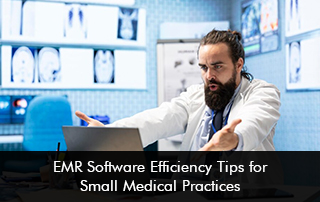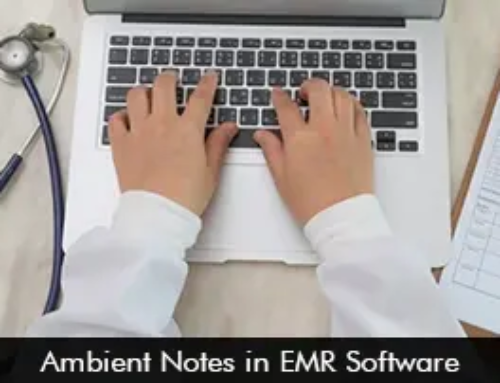EMR software has revolutionized the healthcare industry, particularly for small medical practices. By digitizing patient records and streamlining administrative tasks, EMR systems have significantly enhanced the ability of healthcare providers to deliver efficient, high-quality care.
The Impact of EMR Software on Healthcare Efficiency
EMR software has transformed how medical practices manage patient information and care delivery. Gone are the days of bulky paper files and time-consuming manual record-keeping. With EMR systems, healthcare providers can access patient information instantly, make informed decisions quickly, and provide more personalized care.
Streamlined Workflows
One of the most significant benefits of EMR software is its ability to streamline workflows. From patient check-in to follow-up care, EMR systems automate many administrative tasks, allowing healthcare professionals to focus more on patient care. This efficiency reduces wait times, improves patient satisfaction, and improves overall healthcare outcomes.
Enhanced Communication
EMR software facilitates better communication among healthcare providers, patients, and other stakeholders. With instant access to patient records, test results, and treatment plans, providers can collaborate more effectively, leading to more coordinated care and reduced medical errors.
Tailoring EMR Software to Practice Needs
While EMR software offers numerous benefits, it’s crucial to recognize that different practice sizes have unique needs. A one-size-fits-all approach to EMR implementation is often ineffective, especially for smaller practices with limited resources.
Large Medical Practices vs. Small Medical Practices
Large medical organizations typically require robust, feature-rich EMR systems that can handle high patient volumes and complex workflows. These systems often come with advanced analytics, extensive customization options, and integration capabilities with various other healthcare technologies.
On the other hand, small practices need EMR solutions that are more streamlined, user-friendly, and cost-effective. These practices often lack dedicated IT staff and have tighter budgets, making simplicity and affordability key factors in their EMR selection.
Unique Needs of Small Medical Practices
Small medical practices face distinct challenges that influence their EMR software requirements:
Budget Constraints
Small practices often operate on tight budgets, making the cost of EMR software a critical consideration. They need affordable solutions that offer essential features without breaking the bank.
Limited IT Resources
Unlike larger organizations, small practices typically don’t have dedicated IT departments. Therefore, they require EMR systems that are easy to implement, use, and maintain without extensive technical expertise.
EMR Software Flexibility and Scalability
As small practices grow, their EMR needs may evolve. It’s essential to choose a system that can scale with the practice and adapt to changing requirements over time.
Specialty-Specific Features
Many small practices specialize in specific areas of medicine. They need EMR software that caters to their particular specialty, offering relevant templates, workflows, and features.
Maximizing EMR Efficiency for Small Practices
To make the most of EMR software in small medical practices, consider the following efficiency tips:
Choose Cloud-Based Solutions
Cloud-based EMR systems offer several advantages for small practices. They eliminate the need for on-site servers, reduce IT maintenance requirements, and provide anytime, anywhere access to patient records. This flexibility is particularly beneficial for small practices with limited physical space and resources.
Prioritize User-Friendly Interfaces
Look for EMR software with intuitive, user-friendly interfaces. The easier the system is to navigate, the less time staff will spend on training and daily use, leading to improved efficiency and reduced frustration.
Customize EMR Software Templates and Workflows
Take advantage of customizable templates and workflows offered by many EMR systems. Tailor these to your practice’s specific needs and specialties to streamline documentation and improve efficiency during patient encounters.
Implement E-Prescribing
E-prescribing functionality can significantly enhance efficiency by allowing providers to send prescriptions directly to pharmacies electronically. This feature saves time, reduces errors, and improves patient convenience.
Utilize EMR Software Patient Portals
Patient portals can offload many administrative tasks from your staff. Encourage patients to use these portals for scheduling appointments, requesting prescription refills, and accessing their health records. This self-service approach can free up your staff’s time for more critical tasks.
Integrate with Practice Management Software
Choose an EMR system that integrates seamlessly with practice management software. This integration can streamline billing processes, appointment scheduling, and other administrative tasks, leading to improved overall practice efficiency.
Leverage EMR Software Mobile Access
Many EMR systems offer mobile access through smartphone or tablet apps. This feature allows providers to review patient information, update records, and even conduct telemedicine visits from anywhere, enhancing flexibility and efficiency.
Implement Clinical Decision Support Tools
Look for EMR software that includes clinical decision support tools. These features can provide evidence-based recommendations, alert providers to potential drug interactions, and suggest preventive care measures, all of which can improve the quality and efficiency of care delivery.
Regular Staff Training
Invest in regular staff training to ensure everyone is using the EMR system to its full potential. As new features are added or workflows are optimized, make sure your team is up to date on best practices for using the software efficiently.
Utilize EMR Software Data Analytics
Take advantage of the data analytics capabilities offered by many EMR systems. These tools can help you identify trends in patient care, track key performance indicators, and make data-driven decisions to improve practice efficiency.
Conclusion
EMR software has become an indispensable tool for small medical practices, offering numerous benefits in terms of efficiency, patient care, and practice management. By choosing the right EMR system and implementing it effectively, small practices can significantly enhance their operations and compete with larger healthcare organizations.
The key to success lies in selecting an EMR solution that aligns with the unique needs of small practices – one that is affordable, user-friendly, and scalable. By focusing on cloud-based solutions, prioritizing user-friendly interfaces, and leveraging features like customizable templates, e-prescribing, and patient portals, small practices can maximize the efficiency of their EMR software.
Remember, the goal of implementing EMR software is not just to digitize patient records, but to transform the way healthcare is delivered. With the right approach and continuous optimization, small medical practices can harness the full potential of EMR technology to provide efficient, high-quality care to their patients while streamlining their operations and improving their bottom line.








